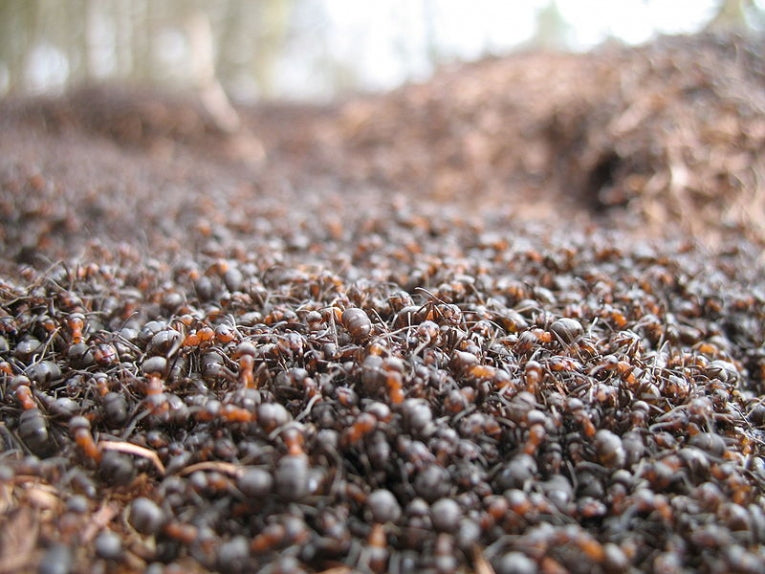With the strength of a tiger and the wisdom of the ancients, one creature towers below all others in the forest. In the woods the very name rings out - Wood Ant! Formica rufa is the wonderful, city-making denizen of deep and ancient pine forest in Caledonia (that's Scotland to you.) Further south, a rare relative builds its huge mounds from oak and other such leaf and twigs.
Formica lugubris in Yorkshire, Derbyshire and the rest of Europe, is near-threatened. So what does York do to help? The University of York have enlisted 1000 workers to carry giant (well, one whole millimetre) radios. The thumbnail sized workers are of course of the northern hairy ant (It's the eyebrows that are hairy if you want to know, but what do you expect of a northerner?) For three years, and they only live for about one year!), these "volunteers" will carry this heavy equipment around several nests, as the colonies are very sociable. I would imagine "Grab an Ant Night" could be every Friday.
50 million of these rare creatures live on the Longshaw estate in the Peak District's pristine woodland. There are several nests, established "roads" between them and multiple royalty, although no princes, we hear. They've heard all about Harry. Samuel, on the other hand - Dr. Ellis to you - is trying to investigate travel and communication in such a vast network. The system seems to operate in very elaborate ways, although to tell the truth, the 1000 workers are as thick as two twigs. As barcode signals come in to Dr. Ellis, he will be examining the relevance of the ants' movements to their environmental adaptations.

The 1mm radio tag shown attached to the thorax of the worker ants, as performed by Dr. Ellis in a matter of seconds! The workers are very large for British ants (between 8 and 10 mm.); Credit: © University of York
The ants will gain in the end, through increases in the conservation techniques being applied. Meanwhile, they were quoted as blaming the queens. "It's not heavy, it's my mother's." It's thought the density of the oak, birch and pine woods is affecting the species' ability to collect sap from the aphid "cows." If the conifers are removed from plantations, the ants should have more aphids to exploit.
Chris Milner of the English National Trust is quoted as saying, "We will be carrying out some forestry work over the next few years, removing lots of conifer trees from modern plantations which will create a larger area of wood pasture, ideal for the ants to move into. The study will give us a real picture of where the ants are and how we can improve the habitat for them and other wildlife without causing disturbance."
With these 50 million small guys in colonies, operating in concert, the ants of course do not act only as farmers. They have a, I'm really sorry about this, gigANT ic effect as predators, because of course they hunt and kill many invertebrates. Vertebrates would also use them for anting (eg jays and other birds.) Dr.Sam Ellis' study is going to tell us a lot about this rare species and its habitat, which is the normal European wood.
This is something really worth preserving, conserving and even amusing you with, as these woody ecological marvels need to be revered for our amazed descendants to be able to appreciate. My ANTics today are worth it, I hope.










